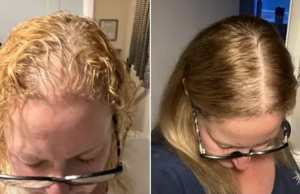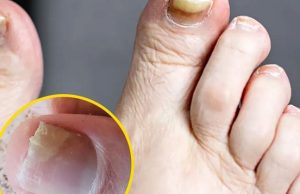
Friends and family who’ve visited my home like to joke that it’s very clean — and admittedly, I make a point of keeping dirt and clutter at bay. However, mold is distinct. It has a tendency to infiltrate unnoticed, which is why I was astonished to discover it along the door frame and rubber seal of my refrigerator. Who would have anticipated its ability to thrive in that location?
“When the refrigerator door is opened, it lets out cool air, which creates condensation when meeting the warmer air outside,” says Alex Wojenski, sustainable cleaning expert at Grove Collaborative. “The moisture that is left behind on the seal, especially in the crevices, is a breeding ground for black mold.”
Wojenski notes that black mold is a potential health hazard and, given this unsuspecting placement, can be transferable to food. If you’re wondering how to properly clean your refrigerator door of mold and keep it free of it, here’s how.
What You’ll Need
- A mask
- A pair of rubber gloves
- A small scrub brush
- Microfiber cleaning cloths
- Vinegar-based cleaning solution or just white vinegar
How to Clean Your Refrigerator Door Seal
Follow these four steps to clean your refrigerator door seal.
For Starters, Wear a Mask as You Clean.

If you do what I did and run a damp paper towel through the rubber fold of your refrigerator door’s seal only to discover mold, the first thing you should do is put on a protective mask. “It can be dangerous to inhale. When mold is not exposed to moisture long enough to dry up (inactive mold) it can become airborne and easily inhaled,” Wojenski says. “Inactive mold is reactivated when exposed to moisture, so inhaling these particles should absolutely be avoided.”
It’s a good idea to wear a mask regardless of whether it’s active or inactive mold, Wojenski notes, and to ventilate the area. Open a window or turn on a fan as soon as mold is spotted, and keep the fresh air flowing through and after the cleaning process. Another detail to keep in mind? If you discover a pervasive case of mold, you may need a respirator — or, better yet, a professional.
Get the Right Tools.

To properly clean mold from this area, Wojenski recommends putting on a pair of rubber gloves and then getting a scrub brush and multiple microfiber cleaning cloths on hand. “The gloves will keep the mold from spreading further,” she notes. “And a small scrub brush will allow you to get into the nooks and crannies in the seal.” You’ll also want to spray the surface with a vinegar-based cleaning solution like this one, but good ol’ white vinegar is also fine.
Apply the Vinegar and Wait.
Start this cleaning process by spraying the refrigerator seal with the spray thoroughly, and then wait for it to soak in. “Let the spray sit for an hour to allow the vinegar to kill the mold,” Wojenski notes. “After the hour is up, use a cloth to wipe it away.”
After, spray the area again. This time, use the scrub brush to get at the mold more fiercely, loosening any pieces that may be stuck there. “Rinse the brush, and then wipe the contents away with a new cloth,” she continues. “Scrub until the mold is no longer visible.” Separately, you’ll want to wash these cloths on their own in cold water.
Keep the Area Clean.
Mold thrives in moisture, so the best way to keep your refrigerator free of it is to consistently wipe down the door frame. “Especially in the warmer months, when condensation happens more frequently,” Wojenski says. Mold won’t grow without moisture; as long as you maintain this routine, you shouldn’t have this problem again.
Source: apartment therapy




















